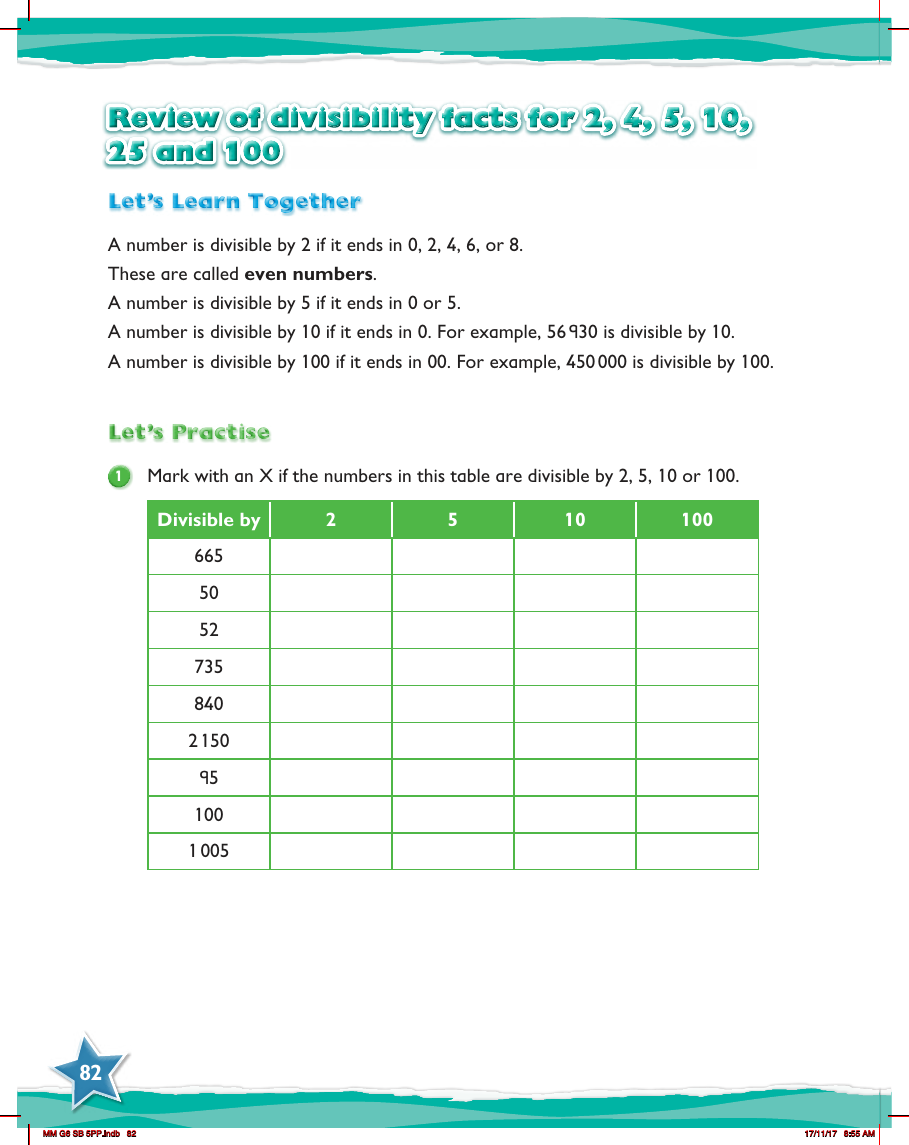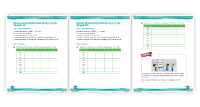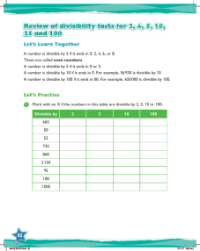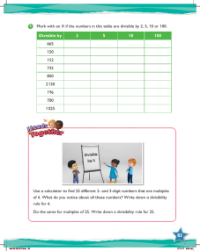Max Maths, Year 6, Practice, Review of divisibility facts for 2, 4, 5, 10, 25 and 100 (1)

Maths Resource Description
In a Year 6 mathematics review session, students revisit the important concept of divisibility—the ability to divide a number by another number without leaving a remainder. The session focuses on the divisibility rules for the numbers 2, 4, 5, 10, 25, and 100, which are essential for understanding number patterns and for simplifying mathematical operations. To determine if a number is divisible by 2, students are reminded to look for an ending digit of 0, 2, 4, 6, or 8, which identifies the number as even. Divisibility by 5 is easily spotted if the number ends in 0 or 5.
The review continues with the rule for divisibility by 10, which requires that a number ends in 0, as seen in the example of 56,930. For a number to be divisible by 100, it must conclude with "00", exemplified by the number 450,000. To reinforce these rules, students are presented with a practical exercise where they mark with an 'X' whether certain numbers are divisible by 2, 5, 10, or 100. This exercise includes a variety of numbers and encourages students to apply their understanding of divisibility facts to determine the correct answers, thereby solidifying their grasp of these fundamental mathematical concepts.


